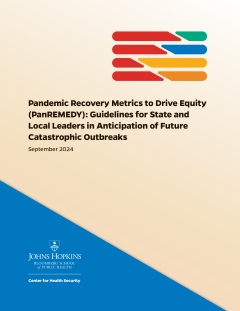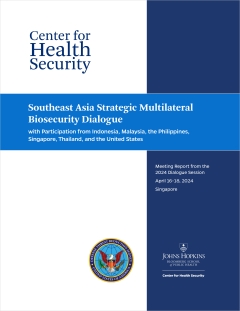The 2024 meeting of the Southeast Asia Strategic Multilateral Biosecurity Dialogue was held in Singapore, with participants from Indonesia, Malaysia, the Philippines, Singapore, Thailand, and the United States. The dialogue is conducted at the Track 1.5 level, with current and former government officials—participating in their personal capacity—and civil society experts collaborating to identify priority threats and gaps, share experiences and lessons, and propose opportunities to strengthen national and regional resilience against natural, accidental, and deliberate biological threats.



